I have data which is generated by intermittent interviews in which an individual is asked whether they are experiencing a certain symptom. The last time each individual was known to not have this particular symptom, is denoted as tstart. If applicable, the time at which the individual is observed to have developed the symptom is tstop. Using the survival package in R, a survival object is created with the Surv function, specifying that this is interval censored data. I would like a non-parametric maximum likelihood estimate of the survival function. This can be accomplished using the survfit function, which seems to pass the call to an internal function survfitTurnbull. The resulting confidence intervals are implausibly wide. I am unable to figure out why this is the case.
# A random sample of the data using dput()
structure(list(tstart = c(0.01, 38, 0.01, 0.01, 23, 26, 0.01,
19, 0.01, 0.01, 22, 6, 0.01, 14, 16, 0.01, 0.01, 0.01, 0.01,
21, 15, 0.01, 0.01, 13, 10, 0.01, 0.01, 19, 0.01, 0.01, 0.01,
0.01, 22, 17, 27, 14, 16, 0.01, 20, 27, 10, 0.01, 0.01, 16, 20,
7, 6, 15, 0.01, 0.01), tstop = c(4.01, NA, 5.01, 8.01, NA, NA,
5.01, NA, 3.01, 16.01, NA, 6.01, 8.01, NA, NA, 7.01, 16.01, 1.01,
10.01, NA, NA, 5.01, 8.01, NA, NA, 2.01, 3.01, NA, 7.01, 5.01,
2.01, 9.01, NA, NA, NA, NA, NA, 10.01, NA, NA, NA, 5.01, 10.01,
NA, NA, NA, 7.01, NA, 14.01, 4.01)), row.names = c(NA, -50L), class = "data.frame")
survObj <- with(temp_df, Surv(time = tstart, time2 = tstop, type = "interval2"))
survFit <- survfit(SurvObj ~ 1))
summary(survFit)
The confidence interval does not narrow over time. It is no narrower using the whole dataset (which is contains approximately 10 times the number of events). I am unable to figure out what is going wrong.

